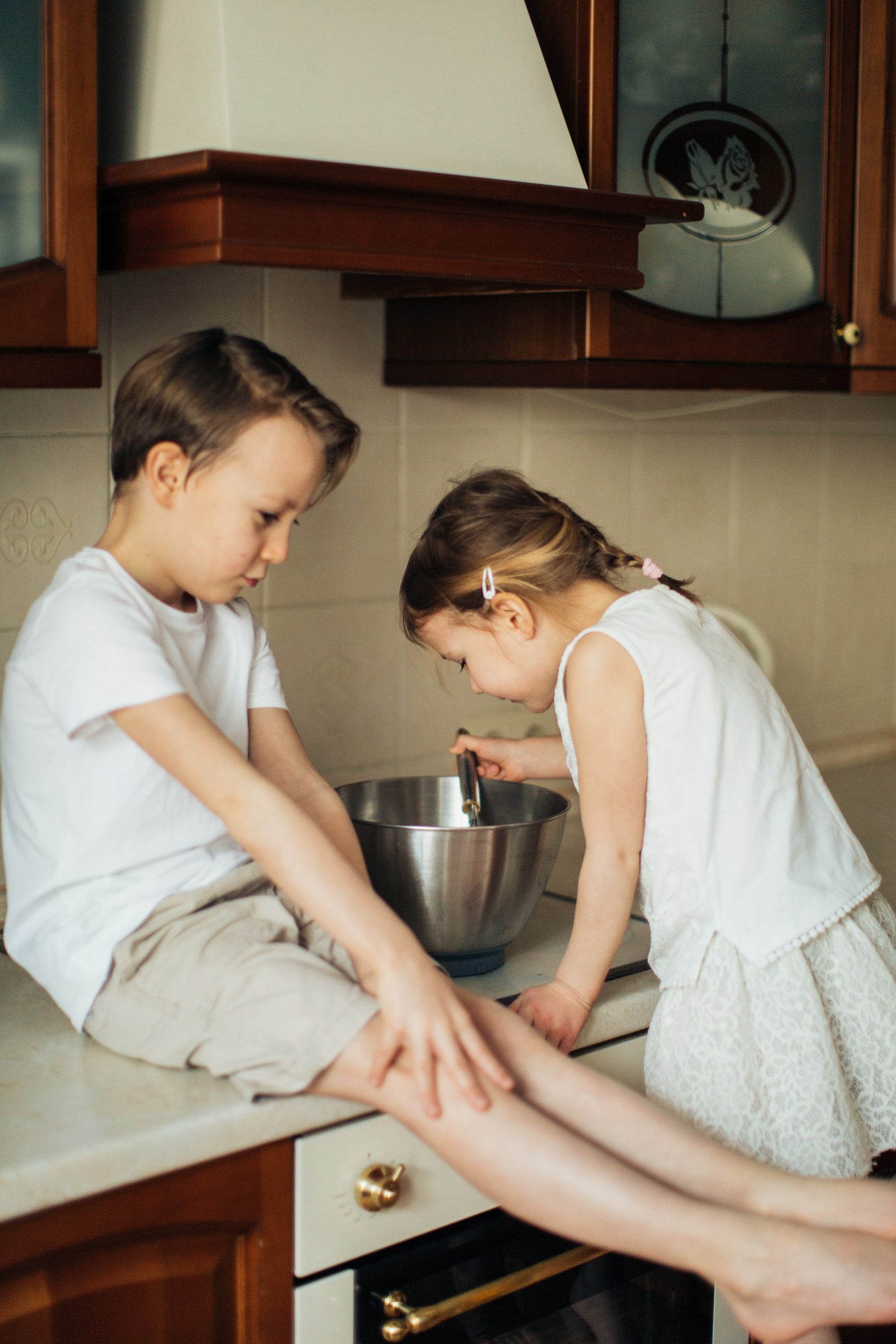July 13, 2020
Teaching Your Kids Math with Baking

Baking is so much more than just a yummy treat – it’s a great opportunity to teach your kids science, reading, and math, especially while they’re on summer vacation. Math can be tricky for kids so making learning fun makes it easier. Here are some different ways you can use baking to teach your children math:
For younger children
1) Early Counting
Baking is a great way to teach early counting. You can have your preschooler count the number of ingredients needed in a recipe or the number of rolls on a pan. Before preheating the oven, have your child count how many racks there are and point out which one is the middle one, bottom one, or top one. With early elementary schoolers, you can ask which ingredient in the recipe is used in the largest amount and which ingredient is used in the smallest amount.
2) Time
Teaching time is easily doable with baking. Have your preschooler practice counting backwards using the timer on the oven. With early elementary schoolers who are learning to read clocks, ask them what time it will be when the baked good is done – for example, if it’s currently 4:00 and the bread needs to bake for 35 minutes, what time will the bread be done?
3) Sequential Order
Teaching your child to follow the recipe in order is an important math skill. After all, later down the road they’ll have to follow ordered steps to solve algebra equations! Show your child how important it is to read all the directions carefully and add the ingredients in the order listed to get the best result. A good example of this is with wet and dry ingredients – often dry ingredients should be mixed together in one bowl before adding liquids, otherwise the texture will be different.
4) Weights and Measurements
With preschoolers, introducing them to measuring cups and spoons is a good way for them to get more comfortable with measurements. You can ask them to hand you the smallest cup (1/4 cup) or the cup with a “2” on it (1/2 cup). With early elementary schoolers, you can talk about ounces versus pounds and what measurements are appropriate for certain ingredients. For example, you could ask them what utensils you would use for liquid ingredients versus dry ingredients, as well as what you would use cups for versus measuring spoons (answer: cups are for when you need larger amounts of an ingredient, and spoons are for when you need a smaller amount).
5) Fractions
Fractions are extremely important in baking, making it easy to introduce them to your children. For preschoolers, it’s best to start with simple fractions, like breaking up pieces of a chocolate bar or having them compare the sizes of measuring cups and spoons. With early elementary schoolers, talk about fractions of ingredients and how cup and spoon measurements relate to each other. For example, ½ cup is equal to 8 tablespoons.
For older children
1) Time
Baking can be used to teach your upper-elementary child about calculating time. For example, ask them questions like: If a loaf of bread takes 50 minutes to bake and 30 minutes to cool, what time should it go in the oven if we need to leave the house by 2:00pm? You can also teach them about start and stop times. If you have a Raisenne Dough Riser, you can have them measure the time it takes to proof dough with Raisenne and without, and then figure out how much faster Raisenne helped the dough to rise.
2) Weights and Measurements
With baking, you can teach older children about converting teaspoons to tablespoons and converting Fahrenheit to Celsius and vice versa. Moreover, you can teach them about ounces, grams, and milliliters compared to cups.
3) Fractions
With upper-elementary schoolers, they have likely had plenty of experience with fractions. Having them double or halve recipes is a great way to practice fractions. You can also have them convert the fractions in a recipe to decimals or compare fractions of ingredients between recipes. For example, if a recipe calls for ¼ teaspoon of salt, what would that be as a decimal (answer: .25)? With your help in the kitchen, they’ll become much more comfortable with fractions.
4) Ratios
Baking is a good opportunity to introduce your older children to ratios. Follow a recipe and ask things like: If we need 1 cup of flour and 4 cups of milk, what is the ratio of flour to milk? (Answer: 1:4). Teaching ratios can also be combined with teaching your child the metric system. Ratios will help your child in doubling recipes.
5) Percentages
You also use baking to teach percentages. You can ask your child things like: What percentage of the total dry mixture is yeast? What percentage of the total wet mixture is water? To up the level of difficulty, teach your child about how volume does not equal weight by having you child weigh 100ml of milk and 100g of flour and compare the difference. You can also measure 100ml of different liquids with your child to further help them understand the difference between volume and weight.
Baking is a rewarding activity that helps children of all ages practice their math skills, especially the skill of problem-solving. There may be a few spills or messes, but the joy of baking is that they can be cleaned up and you can start again. Math is important in everyday life and baking helps make learning more fun.
If you bake something with your child to help them practice their math skills, we’d love to see! Share a photo with the hashtag #bakedwithraisenne and tag us on Instagram.